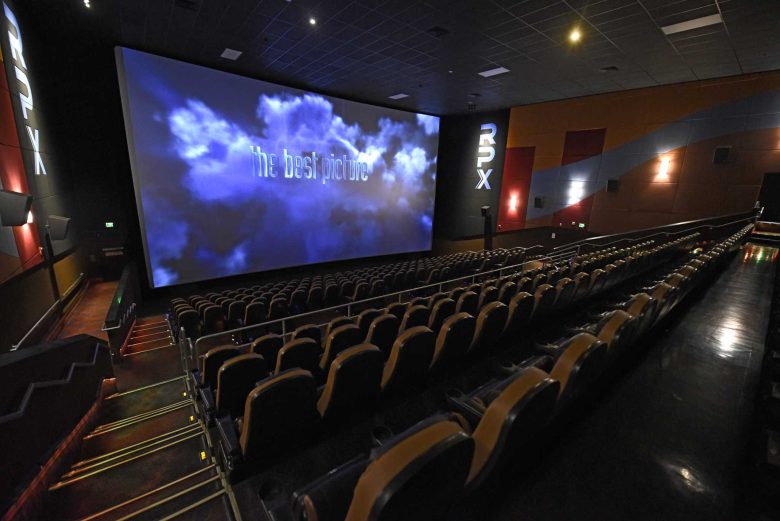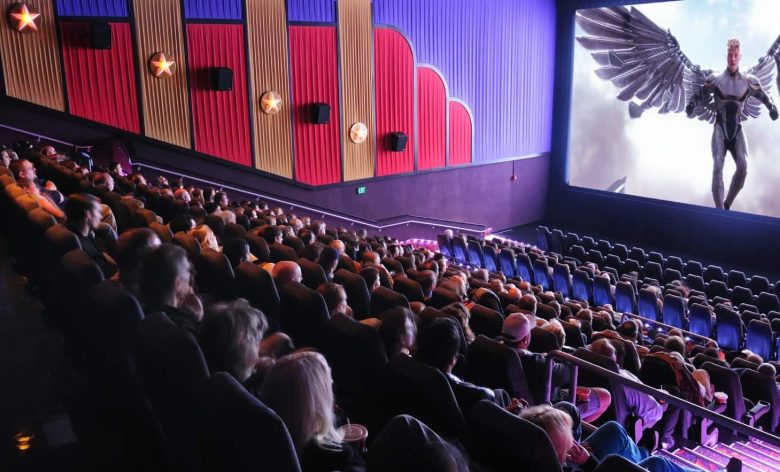If you enjoy watching movies and prefer going to the cinema instead of seeing it in the comfort of your own home, there is probably a lot of info related to it that you’re already acquainted with. Although you are possibly well-versed in many things related to film, there is always more to learn and more that can enhance your movie-watching experience to make it the most fun and enjoyable. With that being said, you should certainly know which theater and which movie format is the best, what is worth watching, and where.
Being familiar with this isn’t common for many people out there, for one reason or another. Typically, people will choose to watch a movie in 2D or 3D without much of a thought, and that’s about it when it comes to this. However, if you’re a true movie buff, you will want to know all there is to know about the screening of your favorite film and the quality of the experience you’ll be having. That’s where we swoop in! We’re here to explain everything there is to know about a couple of increasingly popular movie formats, how they differ from one another, which one is better, and why. Yes, we’re talking about IMAX and RPX.
IMAX and RPX are two of the newest movie formats that have become extremely popular lately. Since the quality of the movie format is one of the crucial factors most moviegoers should take into consideration before purchasing the ticket, you should too. Prior to seeing the movie, you should check which of these formats the said movie features, and decide whether you want to see it accordingly. We’ll provide you with all the info you need to make this decision, so without further ado, let’s begin!
What Is IMAX?
To understand which of these two formats is better and why, we will first break down what each of them exactly is and how it works, starting with IMAX. IMAX is a company that features a line of high-resolution cameras, movie formats, film projectors, and theaters. The name of the company refers to the format we’re here to cover.
IMAX, the film format, is a bit older than RPX. It is very well known for its larger screen size and tall aspect ratio. Back in the day, IMAX cinemas were somewhat of their own stand-alone auditoriums featuring dome-shaped or square screens. On average, the standard screen size in these cinemas was 72 x 53 feet and multiple stories high. These screen sizes are known for being very tall and not as wide, with a specific aspect ratio of 1.43:1. Thus, the auditoriums where IMAX films are projected need to also be very large, and they typically have a unique style that features stadium seating and that has the audience facing the screen at all times.
IMAX also usually uses speakers behind the scene, and what’s interesting is that the seating is adjusted in a way that lets the audience face the taller screen face-first. That is why this is likely to provide you with an excellent movie-watching experience—no matter where you’re seated, you’ll be able to see the screen all the same. When it comes to the quality, IMAX is there to provide great quality imagery, especially in regards to their physical 70mm prints.
If you’re curious about the main characteristics of this film format, take a look at the list below to see a few of the main ones:
- Extremely large film stock, cameras, and projectors
- Super heavy and noisy cameras
- Screens that are multiple stories high
- 12k resolution
- The film doesn’t run through the camera and projector vertically but horizontally
What Is RPX?

Source: hdnux.com
Now that we covered IMAX, it’s time to talk about RPX. RPX is the latest film technology that was launched in 2010 by an American movie theater chain called Regal Cinemas. RPX stands for Regal Premium Experience, and by the name itself, you can already tell that this company wanted to create something that is very high-quality and impressive for its customers. With IMAX already on the market, competitors started looking for ways to improve their own ticket sales and the quality of the movie-watching experience. That is why RMX theaters started featuring a bigger screen than what the standard for a Regal cinema used to be, as well as improved sound and reclinable leather seats. Better picture and audio quality are guaranteed with RPX, and the screen size is typically 52 x 72, which is considerably smaller than those of IMAX but still provides an immersive and enjoyable experience.
When it comes to RPX, movies are usually played via dual 30,000-lumen digital projectors and the theaters should feature a 7.1 Dolby Atmos or 11.1 Auro sound system. This gets a bit trickier since you can’t really be sure which sound system the theater you’re planning to visit is really using. Employees, however, should have this type of info, so you can ask one of them about it before deciding whether to see a movie there or not. A premium experience that includes high-quality imagery and recliner seats that provide you with ultimate comfort are two of the main characteristics and benefits of RPX theaters.
All things considered, both IMAX and RPX provide you with certain features that you will likely find very useful and beneficial. We understand that you might still be confused and unsure about which of these is better, so to conclude which of these two you would ultimately prefer, continue reading about the main differences, as well as pros and cons.
IMAX VS RPX—The Main Differences
You now understand what IMAX and RPX are and how they work, but you should also try to get a better picture of what the crucial differences between these two are. Although they are both very popular and feature some of the greatest technologies, they are not entirely the same. The reason why learning about the main differences between these two is important is that it is easy to make a mistake and make a wrong choice when you don’t have enough info to go on. That is why we listed each crucial factor and explained it to a tee. You can save the time and energy you would otherwise spend trying to find this info on your own by letting us do the work for you. All you need to do is take a look at the list below to find out how the two differ in terms of infrastructure, technology, screen ratio, quality, comfortability, and more.
1. Infrastructure & Technology
When it comes to IMAX, their theaters are known for the 3D effect screenplay. What’s interesting is that you don’t have to use 3D glasses to feel the tech. You can sit facing the center (you actually have to face the center if you want to see and enjoy the 3D effect), and also sit close to the screen to get the best experience. The seats in these cinemas are typically steep and the screen infrastructure is quite different from other theatre screens out there. The image is projected via digital laser projectors, and the screen features a silver coating vertically and horizontally.
RPX, on the other hand, features the technology called ‘’cutting-edge technology’’. High-quality large screen that these cinemas feature provides enhanced picture quality and offers an excellent experience. The digital projectors and surround sound only add to the overall experience that provides you with ultimate comfort and convenience. Unlike the IMAX cinema, RPX has an audio system that delivers sound all over the room. When it comes to the screen infrastructure, it’s not the same as IMAX. The RPX tech features a flat screen that doesn’t require you to sit facing the center for the full effect. You can also watch your favorite movies in both 2D and 3D—it’s your choice.
2. Screen Ratio

Source: nyt.com
The screen ratio is one of the biggest differences between IMAX and RPX. IMAX features a tall display, and these displays can be from 70 to 100 feet tall and 53 feet wide. Although this is a massive size for displays, the dual 2L screens come in smaller sizes. The screen ratio for these screens is 1.90:1 (17×9).
As for the RPX cinemas, they feature wider displays than IMAX ones do. Although they have smaller flat screens, the quality and dimensions are excellent and provide you with a great experience. When it comes to the screen ratio for the RPX display, it’s 1.25:1.875 (40X60).
3. Sound System
The sound system that these two cinemas feature is also quite different. IMAX cinemas have a sound system that is located behind the screen. The speakers that are normally used are 12-channel speakers, and they provide excellent quality audio. Dolby Atmos surround sound technology is also used in IMAX theaters, and its quality of it is undeniable.
RPX cinemas tend to use a 7.1 channel surround audio system, and this audio system is one of the best out there, especially for cinemas. When it comes to watching movies in general, and in 3D, having this audio system is what makes all the difference. The sound is carried throughout the entire room and the overall sound effect is greatly boosted, which provides the audience with an immersive and very enjoyable experience.
4. Comfortability

Source: circleplus.in
If you’re planning on seeing a movie in a cinema, you should definitely think about the comfort that the cinema in question provides. You don’t want your experience to be ruined once you get there and see the seats and the screen aren’t what you expected them to be. That is why we provide you with all the info regarding the IMAX and RPX cinema comfort.
IMAX cinemas feature comfy seats that are made with excellent padding. This padding makes the seats more comfortable compared to the regular ones. However, the seats in this cinema are somewhat steep, which makes them different from most of the regular ones out there. The steepness of the seats shouldn’t affect their comfortability, though.
RPX cinemas are known to have an extremely comfortable and luxurious environment. Their main focus is on providing the ultimate comfort and convenience to the audience, and that is exactly how their seats are made. The leather covers and cushions are designed to provide you with extra comfort, as well as head cushions and higher backs. You can simply sit back and relax, and have the most immersive and cozy movie-watching experience you deserve.
Here is a short list of the above-explained parameters (and a few more) you should take into consideration when deciding whether IMAX or RPX is better for you:
| Parameters | IMAX | RPX |
| Infrastructure | Tall curved screens | Wide flat screens |
| Screen Ratio | 1.90:1 or 17X9 | 1.25:1.875 or 40X60 |
| Screen Display | 70-100 feet tall and 53 feet wide | 40 feet tall and 60 feet wide |
| Sound System | 12 channel speakers/Dolby Atmos | 7.1 surround sound system |
| Comfortability | Comfortable seats with extra padding | Luxurious leather seats with additional cushions and higher backs |
| Projector | Dual laser projectors | High-quality digital projectors |
| Best For | 3D and 2D movies | 3D and action movies |
Conclusion
With all of this being said, deciding which of these two would work better for you ultimately falls onto you. If you want a taller curved screen that will make you feel closer to the scenes and the characters, IMAX could provide you with such an experience. In addition to that, if a 70mm film format and digital laser projectors that provide quality pictures sound perfect to you, IMAX has it.
However, if you’re searching for an enhanced, vibrant, and sharp image quality, screens suitable for both 2D and 3D movies, an incredible surround sound system that makes the experience 10 times better, as well as outstanding comfort while watching your favorite movie, then RPX is an ideal choice for you! Think about what your preferences and needs are, and choose wisely and accordingly.




